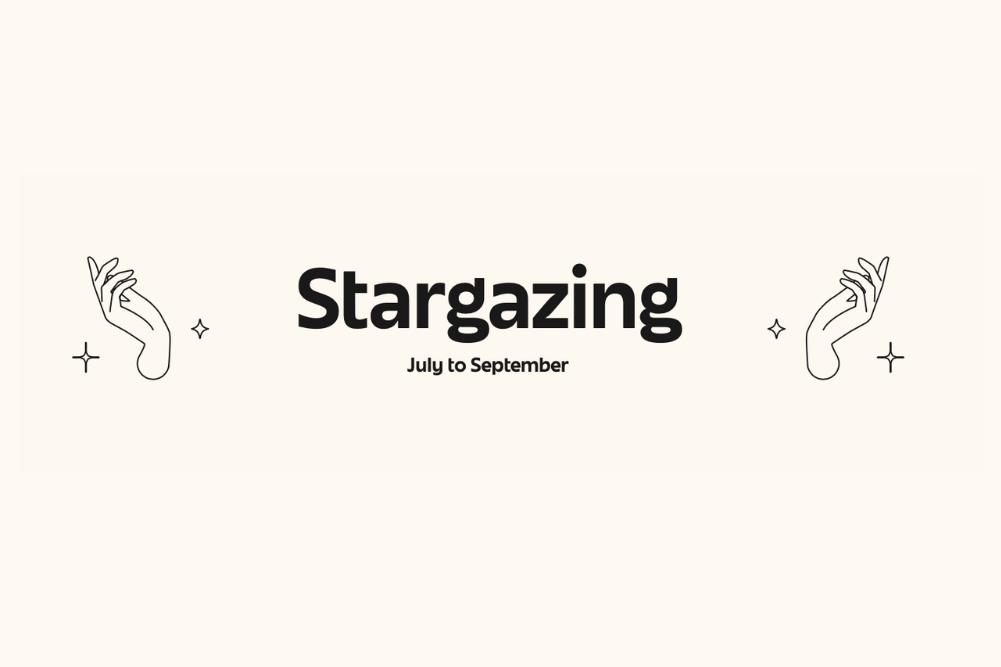Like clockwork: Timing events with Horary
Discover how to use symbolic and real-time aspects to identify the timing of important events using horary astrology
Astrology can provide insight into when something might be expected to take place or be resolved. The trouble is, the original source texts that inform much of the western tradition of astrology give confusing and often conflicting accounts of how to figure out the timing of when something might occur or be resolved. Should you use symbolic timing, where each degree is linked to one unit of time, or should you opt for timing via real-time transits, or, would a mixture of both be best? Let’s explore these options using some horary astrology chart examples from my case files.
Scorpio is a cold and wet water sign, while Leo is a hot and dry fire sign.
Horary is a divinatory branch of astrology, not unlike Tarot or the I Ching. Horary is used when you have a question or problem that needs solving and the astrologer uses the current position of the planets and signs overhead, rather than your personal birth chart, to provide context for your situation and shed light on possible avenues of resolution.
Will we reunite?
In November 2015 I had a client in his late twenties who’d recently gone through a messy and unwanted break-up. He’d sent flowers to his sweetheart but was met with radio silence. Stressed that he’d screwed up this relationship beyond redemption, he came to me to ask if the two of them would ever reconcile and get back together, and if so, when.
In the horary chart cast for his question, the sign of Pisces is rising, and so the ruler of Pisces, Jupiter, is used to represent and signify my client. The opposite house to the ascendant, the descendant or seventh house, has Virgo on its cusp, and so Virgo’s ruling planet, Mercury, will be used to signify the sweetheart.
Firstly, both Jupiter and Mercury are badly placed and approaching a tense square aspect. Mars, a planet of tension, is located in the seventh house of relationships, and the South Node is placed in the first house. In addition, Mercury has recently separated from a conjunction to Saturn. There’s no denying this relationship was, and would continue to be, fraught with difficulty.
Horary is a divinatory branch of astrology, not unlike Tarot or the I Ching.
Since we’re concerned with timing, what’s of most interest is the applying square of Mercury to Jupiter, with mutual reception, and the Moon’s application to Jupiter (also received, this time by exaltation). As Mercury signifies the significant other, and Mercury is the one applying to Jupiter, which is my client’s significator, the chart indicated that the significant other would be the one to get in touch.
The Moon echoed the same idea. The Moon always shows you where the client’s focus is (in this case, the ex), and the Moon is applying to Jupiter as well. The advice I gave the client was to hold back from initiating any more contact. Jupiter is angular and in the seventh house, which indicates the client is ready to move full steam ahead, but in this instance patience was key.
To satisfy the client’s nervousness, I needed to provide a time that he could expect to hear a reply. Historical texts make a big deal of the sign and house placement of a planet when determining timing.
A planet in a cardinal sign or an angular house indicates great speed, which might indicate toward units of time like hours or days. A planet in a fixed sign or a cadent house is slow. These planets indicate very little action, or show events that take a long time to develop, possibly months or years, or it can indicate endless delays so that everyone despairs and gives up. A planet in a mutable sign or succedent house is middling.
| Cardinal Signs: Fast | Mutable Signs: Middling | Fixed Signs: Slow |
| Aries | Gemini | Taurus |
| Cancer | Virgo | Leo |
| Libra | Sagittarius | Scorpio |
| Capricorn | Pisces | Aquarius |
| Angular houses: Fast | Succedent houses: Middling | Cadent houses: Slow |
| First house | Second house | Third House |
| Fourth House | Fifth House | Sixth house |
| Seventh house | Eighth House | Ninth House |
| Tenth House | Eleventh House | Twelfth house |
So how should you approach timing in the context of this chart? Jupiter is angular in the seventh house, Mercury is cadent in the ninth house, and both Mercury and Jupiter are in mutable signs. The Moon is in a cardinal sign in Cancer but in a succedent house in the fifth house.
Even if you rightly apply the logic that it’s the applying planet that should take the lead when working out a timeline, in this example, that would highlight Mercury and the Moon, who both apply to Jupiter, you’re left with the realisation that there is a mixed bag of testimonies. These include swift resolution shown by the Moon in a cardinal sign, slow or delayed resolution due to Mercury being in a cadent house, and while somewhere in between swift and delayed is indicated by Mercury in a mutable sign and the Moon in a succedent house.
Even if you could settle on a unit of time, and if you did it would probably be days or weeks as those make the most sense in this situation, you still have two different symbolic pictures: the Moon is six degrees away from Jupiter, and Mercury is eight degrees away Jupiter. You would be justified in being confused on how to proceed. The distance between six to eight weeks is substantial; in days it may not be so much, but it could be in cases that required a hard deadline, like loan paperwork.
The Moon always shows you where the client’s focus is.
Thankfully, there’s a simple, dependable approach that you can rely on. You start with symbolic units of time, then back that up with a real-time transit to nail down the event occurring.
If the Moon is six degrees away and Mercury is degrees away from Jupiter, it gives a possible timeline of six or eight, in days or weeks. The Moon is in a cardinal sign and Mercury is moving faster than his average motion, and these are the two fastest planets. In addition, the client’s significator is in an angular house and unlikely to miss or not receive the communication. Symbolically, all these considerations suggest speed, and so I assumed I would look at six or eight days. You might shorten or lengthen the expected unit based on factors like speed, sign and house placement, but it is best to start with the raw numbers.
This question was asked on 28 November 2015. Looking forward six days in the ephemeris to December 4, I found the Moon came to 20 degrees Virgo – right on the conjunction of Jupiter! Because the aspect between these two was leading in my interpretation, I marked this as significant.
I also noticed that on the same day Mercury perfected the square to Jupiter in 21 degrees of their respective signs. I didn’t even need to look eight days forward. It was clear to me that December 4, six days on from the question, was the date, because it fit the picture symbolically, and the planets giving the symbolic indication, Mercury to Jupiter and Moon to Jupiter, all perfected an aspect by real-time transit on that date.
My client got the I’m-ready-to-talk text late on December 3 and found it upon waking on December 4.
Will we get back together?
An acquaintance had recently gone through a breakup and wanted to know more. His ex-boyfriend left him for reasons that weren’t immediately disclosed. The ex-boyfriend had contacted my acquaintance on the day the horary question was asked to arrange dinner plans. The person asking the question, in this case my acquaintance, is known as the querent in a horary question, and they wanted to know if they would reunite, and what he could do about it.
To a practising astrologer, this sounds straightforward enough, but the person I was working with was less than half-hearted about astrology. He only approached me because he was quite lovestruck and desperate for whatever information I could give him about the future of his love life.
It’s common for someone to approach an astrologer when they are at the end of their rope, but here was a sceptic, someone who didn’t even understand why he was turning to astrology. I knew I needed to tell him something that I couldn’t know, something to help him enter into the consultation process.
Just that morning I had been researching what William Lilly (17th century English astrologer) had to say about the superior planets, Mars, Jupiter and Saturn, changing signs; namely that it is an infallible testimony of a meaningful change in situation.
I noticed that my client’s significator, Jupiter, had just moved into Leo, changing signs from Cancer. This is quite a dramatic drop in dignity for Jupiter, from exaltation to triplicity by night only, and so I slowed down to think about what that might signify. Knowing the breakup had been recent, I wondered if it might signify the breakup itself – the movement away from relationship, the change of status into something okay but unimpressive.
I rewound my software to find the date that Jupiter left Cancer and entered Leo. On 16 July 2014, Jupiter moved from Cancer into Leo. “You broke up,” I said, “on the sixteenth of July.” He paused, I paused, then he fumbled for his phone. “I don’t know, let me look,” he replied. He scrolled through his phone, looking for the break-up text – because it was 2014 and we break up via text these days. He looked amused but shocked when he’d scrolled far enough back: “It was July 16.”
At this stage, he begins to reflect more open body language but I could tell I hadn’t quite convinced him. I wondered what I could tell him next.
Mercury was making an eventual conjunction to Jupiter, which indicated a future union.
He’d mentioned his ex had suggested they meet for dinner. I wondered if I might be able to nail down the date they agreed to meet. I noticed that Mercury, which ruled the seventh house in his horary chart and so symbolised his ex, was applying to Jupiter, the planet that ruled the first house in his horary and the planet that described him, by quite a wide orb. Even though it was a wide distance, they were applying. So I zipped forward in my software to the day the two planets would be conjunct in real-time: August 2, a Saturday. Saturday makes sense as a night to go out to dinner, so with a blend of astrology and common sense I said, “You agreed to go to dinner Saturday, August 2.”
Up to this point he had been standing up while talking to me, which was a strange dynamic, as I sat working through my computer software and taking notes. But at this moment he sat down. “Yes, we did,” he confirmed. “Just minutes ago we agreed on the day. Tell me everything.”
The consultation flowed from this point forward as he and I discussed the pros and cons of what the astrology had to say. Mercury was making an eventual conjunction to Jupiter, which indicated a future union. It wasn’t yet in orb, which is to say there is plenty of time to determine what form this conjunction takes.
However, whatever shape it may have taken, the meeting of Mercury and Jupiter in Leo is interrupted by a disruptive square from Mars in Scorpio. This is an afflicting influence and is a particularly difficult square as Mars is in the eighth house, and in a sign, Scorpio, that has little in common with Leo. Scorpio is a cold and wet water sign while Leo is a hot and dry fire sign.
In addition, Jupiter and the Moon are both in a cadent house and hiding beneath the bright beams of the Sun. There’s plenty kept hidden underneath the surface here, like secrets being held onto.
I advised my client of this, but he didn’t share much more with me – which made sense as the planet of confusion, Neptune, is on the ascendant and both Jupiter and the Moon are visibly dark due to combustion from being so close to the Sun – only that he missed his ex and wished they would get back together.
The two did meet for dinner. They had a lovely enough start to the evening, but it was soon revealed that my client had started seeing someone else in the short period between July 16 and August 2. This was quite an emotional hit for Mercury, the ex, and feelings of betrayal were voiced. The relationship fell through for the last time and the two didn’t speak again.
Beyond timing
Timing isn’t always the crux of a problem. You might think it is; that if you just had what you wanted, and if you had it now, then everything would be solved. More often, astrology shows that what you’re grappling with runs deeper than one-off circumstantial misfortunes, and it may never be the right time until you address that problem fully.
A horary chart can indicate this when there is a clear indication that something should be progressing, like an aspect between important planets moving in a happy direction, and yet no harmony between symbolic and real-time transit can be found.
What I’ve come to understand is that this scenario occurs when there’s another factor not being considered that’s weighing heavily enough to distort any reliable, sure-shot approach to timing.
In these cases it’s ideal for the astrologer to guide the client toward a more meaningful conversation about what their crisis represents in their life. Whether it has happened before, or something very similar to it, and what tools the client has at their disposal to work through it the old fashion way – with blood, sweat and, sometimes, tears.
While this can be frustrating if you’re looking for that concise a-ha! type of consultation experience, this lack of symbolic and real-time harmony can clue the astrologer in to the fact that they’re assessing a chart with the power to change lives; and what an adventure that can be for everyone involved.








